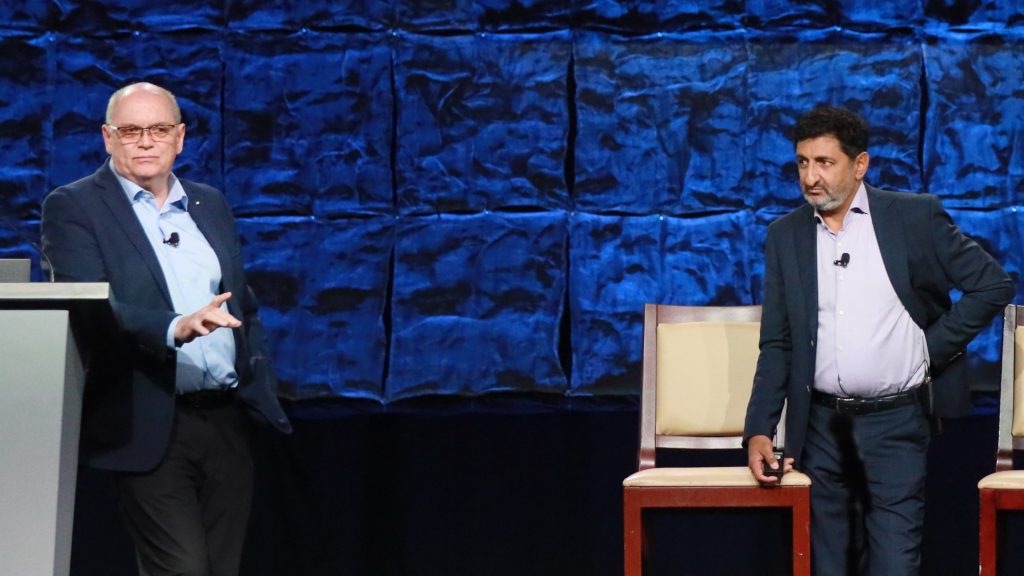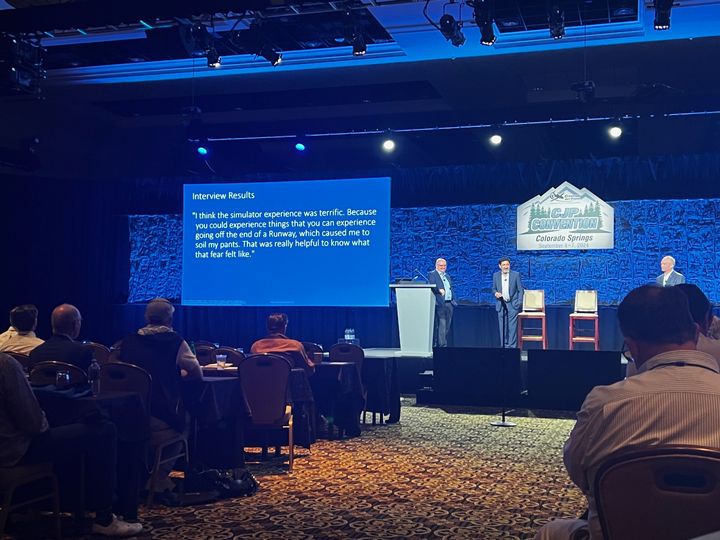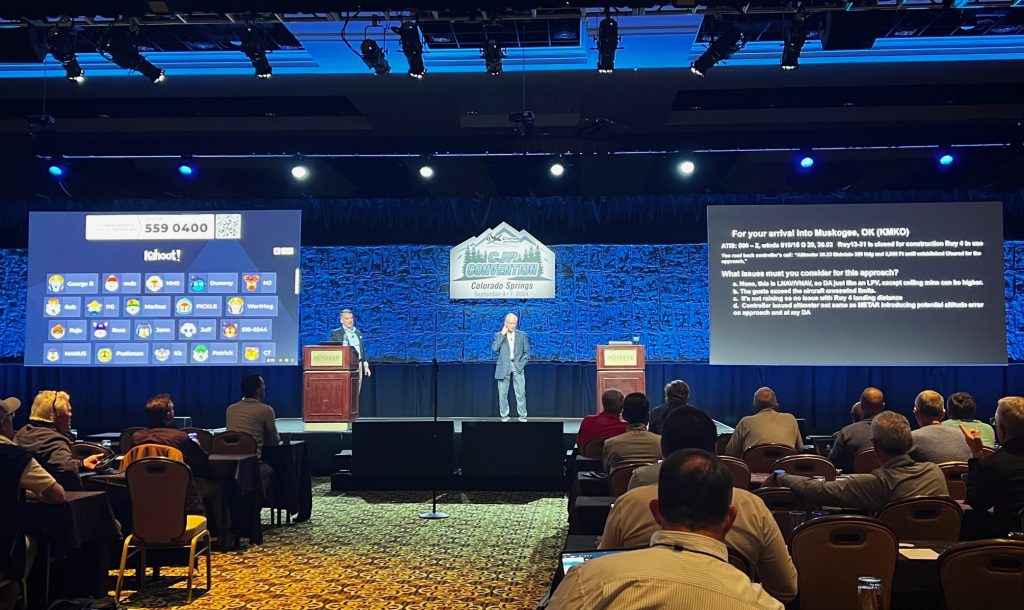The focus on situational awareness continued at CJP 2024 as Presage Group’s Dr. Martin Smith and Piyush Gandhi joined Charlie Precourt, CJP Safety Committee chairman, to provide an update on CJP’s Safe to Land℠ program, including results from interviews with 40 early adopters and those who’ve undergone different steps of the program.

“You are the subject matter experts for the content that is developed,” noted Dr. Smith, CEO and co-founder of the software and data analysis company. “We want to know what your situation awareness is on a stable approach and when on an unstable approach.”
One of most encouraging findings is that pilots who’ve gone through Safe to Land℠ training are indeed better prepared to go around, versus trying to force an unstable landing. “Everything we do here is designed to prime the psychological pump,” Smith said. “That’s the readiness to act and to remove negative connotations associated with go arounds.”
Respondents also had the chance to describe their experiences in the sim. Some were quite candid, as shown below.

Comparing the Safe to Land℠ training simulator experience to batting practice – “that’s the way the sim is set up. It’s just ‘bang, bang, bang,’ repeated exposure” – Precourt emphasized the importance of verbal callouts.
“We’re all accustomed from our basic initial training for the type rating to verbalize calls on takeoff, but don’t really say much on approach,” he added. “We train you to do them during the approach phase, not only the nominal calls, but the off-normal calls as well. “If you’re really comfortable with having that verbal feedback, you’re primed for the right course of action.”
The findings also revealed areas for improvement. Of note, thirteen respondents who’ve undergone some level of Safe to Land℠ training admitted continuing on unstabilized approaches below 200′ three or more times.
While that’s an area to work on, “It also tells us those people were aware of the criteria and that they were unstabilized,” Precourt added, “versus being completely oblivious to their situation – the ones who don’t know what they don’t know.”
This tied to another significant result, Gandhi added. “We holistically found that this training should be added to the existing training program at FlightSafety, and that we should tag this on to the back of the 61.58 training. And, we should do repeatedly.”
Once Safe to Land℠ 2.0 is rolled out – adding similar gates for non-stabilized approaches – “we’ll come back and do this again and see what those numbers look like,” Gandhi continued, “and how much better the numbers will be for the entire program.”
The survey also brought about a change to the structure of the program, with the two-hour ground school portion (followed by two hours in the sim) to be soon replaced with an online ground school course. “You can watch the video to get up to speed on the academics,” Precourt said. “When you’re finished with your 61.58 you can find an instructor that can issue this to you [following sim time.]”
Brushing Up on CJP SOPs
After lunch, Precourt and Master CFI Neil Singer led attendees through the latest revisions to CJP’s Standard Operating Practices (SOPs) for members, driven by findings from CJP’s Flight Operations Quality Assurance (FOQA) program and participant feedback.

These included new criteria for visual approaches, maintaining a distance of 1.5 to 2 miles from the runway on downwind and turning final at 2.5 to 3 miles from the approach end of the runway to avoid high sink rates. For circling approaches, the SOPs set weather minimums at 3 miles visibility during the day, 5 miles at night, and a 1000-foot ceiling or 500 feet above the circling MDA, whichever is greater.
“You have a hockey puck around you,” Precourt said. “That is the ceiling on the top, the ground on the bottom and your visibility to the sides. You have to keep the edge of that hockey puck on the runway or else you’re not going to see it.”
While safety is a serious subject, of course, there’s also room for some fun. Following the review, Precourt and Singer led attendees in a rousing game of “Kahoot” to quiz teams on different approach scenarios. That was followed by “Your Jet in Jeopardy,” testing Citation Mustang, G3000 and Pro Line 21 teams on their knowledge of FAA requirements and CJP SOPs on matters ranging from the effects of fatigue on pilot performance to how to properly respond to a lithium-ion battery fire onboard.